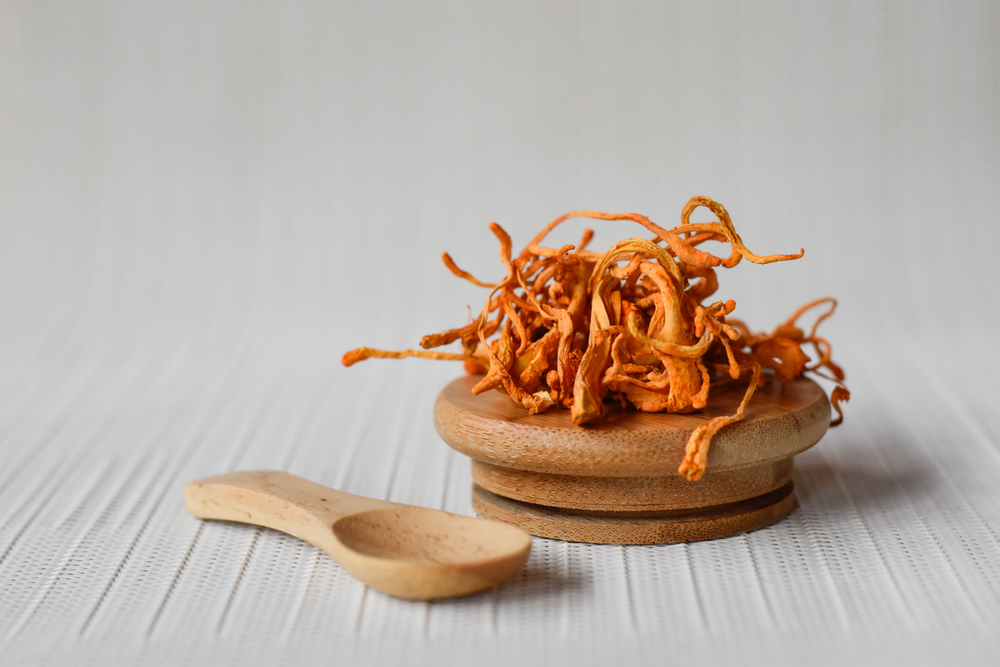
Are you concerned about your furry friend’s stress levels? If so, you’re not alone. Stress can take a toll on your pet’s overall well-being, and as pet owners, we want to do everything we can to help them cope. That’s where cordyceps, an adaptogenic mushroom, comes in. In this article, we’ll explore how cordyceps can support your dog or cat’s adrenal glands and help them deal with stress more effectively.
The Role of Adrenal Glands in Your Pet’s Stress Response
The adrenal glands, located just above the kidneys, play a crucial role in your pet’s stress response. These small glands produce adrenaline and other stress hormones when the body perceives a threat. They are responsible for the “fight-or-flight” response that helps your pet handle stressful situations.
The HPA Axis and the Sympathoadrenal System
The adrenal glands work in coordination with the pituitary gland and other glands in the body to regulate hormone production and maintain balance. This interactive relationship is known as the Hypothalamic-Pituitary-Adrenal (HPA) Axis. Additionally, the adrenal glands are also involved in the Sympathoadrenal System (SAS), which triggers the fight-or-flight response in your pet.
Understanding Adaptogens and Adrenal Stress
Adaptogens are natural substances, such as cordyceps, that can help the adrenal glands function optimally, especially in times of stress. Cordyceps is a mushroom known for its adaptogenic properties. It has been traditionally used to boost energy, counteract stress, and improve athletic performance. Studies have also shown that cordyceps can protect the kidneys and support patients with chronic kidney disease.
Cordyceps — An Adaptogenic Mushroom
Among medicinal mushrooms, cordyceps stands out as a powerful adaptogen. It contains components that target the endocrine system, adrenal glands, and sex glands. Its unique pathways help modulate adrenal stress and balance hormones. Cordyceps has been used for centuries to promote fertility, support healthy kidney function, manage stress, and increase energy levels.
Stressors That Affect Your Pet’s Adrenals
Your pet can experience various stressors that impact the adrenal glands. Environmental stressors like extreme temperatures can be challenging for them to cope with. Emotional stressors, such as crowding or predation, physical labor, trauma, or fighting with other animals, can also affect your pet’s adrenal glands.
Diseases Involving the Adrenal and Pituitary Glands
The relationship between the pituitary and adrenal glands is critical for maintaining your pet’s health. Conditions like Cushing’s disease, caused by overstimulation of the adrenal glands, can lead to hormone imbalances and various symptoms. On the other hand, Addison’s disease occurs when the adrenal glands under-function and fail to produce enough essential hormones.
The Potential of Cordyceps for Your Pet’s Health
Research suggests that cordyceps may have significant benefits for pets suffering from adrenal-related conditions. In horses diagnosed with equine Cushing’s disease, cordyceps has shown promise in improving their health. However, further studies are needed to explore the full potential of cordyceps as an adaptogenic mushroom for pets.
Cordyceps is just one example of the many medicinal mushrooms that can support your pet’s overall well-being. By incorporating cordyceps into your pet’s routine, you may help them better cope with stress and maintain a healthy balance in their adrenal glands.
For more information on pet health and wellness, visit Pet Lovers Diary.
References:
[1] Winston D. Adaptogens: Herbs for Strength, Stamina, and Stress Relief. (2007) Healing Arts Press, Rochester, VT. 05767. ISBN: 978-1-62055-958-1
[2] Hobbs C. Christopher Hobbs’s Medicinal Mushrooms: The Essential Guide. Cordyceps: pp 89-95 (2020) Storey Publishing; North Adams, MA 01247.
[3] Jedrejko KJ, Lazur J, Muszynska B. Cordyceps militaris: An Overview of Its Chemical Constituents in Relation to Biological Activity. (2021) Foods; 10,2634.
Source: Pet Lovers Diary
